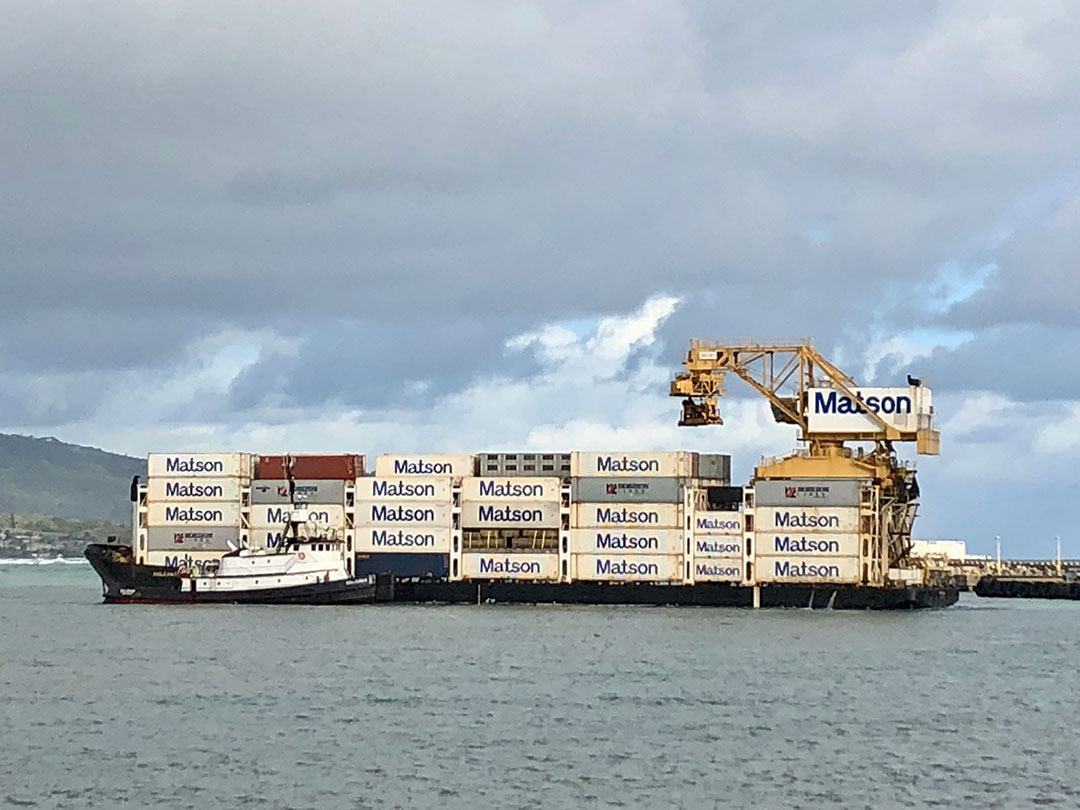
Automotive traffic enters the ferry in Cape May, N.J., and exits in Lewes, Del., making a water journey across Delaware Bay. But in one sense, it hasn’t left Route 9.
A new round of federal funding is expected to improve this intermodal movement across America’s marine highways and promote waterborne transport as an alternative to roadway congestion.
Nine marine highway projects around the country received $12.6 million late last year from the U.S. Maritime Administration (MarAd), as part of America’s Marine Highway Program. The agency announced more recently that $25 million is available for the program through the federal infrastructure package President Biden signed last fall.
And in August, MarAd announced a new marine highway designation connecting Guam and the Marianas Islands in the Pacific Ocean. It also supported six new marine highway projects in the U.S. and its territories.
“These new project designations will improve the movement of freight by water all around the nation, including along our coasts, on our inland waterways, and to Guam and the Northern Mariana Islands,” Acting Maritime Administrator Lucinda Lessley said in August. “Making better use of our inland waterways can boost America’s maritime industry and create jobs while cutting emissions and traffic congestion.”
The Marine Highway Program promotes the increased use of the nation’s navigable waterways to move cargo. It aims to relieve highway congestion, reduce emissions and make existing transportation routes more efficient. There are currently 26 marine highway routes in the United States and its territories, and each serves as an extension of the surface transportation system.
The Marine Highway Program launched in 2007 with “the idea of offering a third mode of surface transportation for freight with the ultimate goal of reducing landside congestion,” said Tim Pickering, operations development manager for the Marine Highways Program.
The maritime industry has long emphasized studies showing it is the most efficient means of moving cargo. One inland dry cargo barge, for instance, can carry as much as 15 railcars and 60 semitrucks, according to the trade group American Waterways Operators. And a 15-barge tow can haul as much as 1,050 traffic-clogging semis.
The 26 marine highways often parallel existing interstate highways and smaller roads that would be used to transport freight, and often bear similar names. The marine highway following Virginia’s Interstate 64, for example, is called M-64.
When the program launched, it initially supported projects moving freight. But in 2012, its mission expanded to include grants and funding that support the public benefit. Thus, the Cape May-Lewes Ferry can contemplate a plan to design a greener ferry boat through the $600,000 grant it received earlier this year.
“We want to look at the future of the ferry for decades to come and try to determine the size, speed and how they would operate on this route,” said Heath Gehrke, director of ferry operations for the Delaware River and Bay Authority.
The authority is exploring a new vessel design that could incorporate electrification and power storage. The hope is that some or all of the 14-mile crossing could be completed using electrical power, sharply reducing or eliminating emissions. Solar or wind power could be used to charge those batteries during downtime.
“Even if it doesn’t happen in the first decade of this,” said Gehrke, “if that is how we are planning, it’s a good story to tell.”
Since its beginning, the Marine Highway Program has designated 52 projects, and since 2016 the program has received $44.6 million through the DOT’s Maritime Administration. All recipients must comply with the Buy American Act to support U.S. companies.
M-64 is the program’s first and most successful project, according to program officials, referring to the marine highway moving freight along the I-64 corridor in Virginia. In the future, the Marine Highway Program could expand its focus to freight moving in quantities smaller than 20- or 40-foot shipping containers. Package carriers working in large metro areas, for instance, are exploring moving smaller loads over water, Pickering said.
“Moving palletized loads by barge in urban areas can take as little as 20 minutes,” he said, “while moving it by a truck can take hours, in addition to the tolls and congestion on bridges and tunnels.”
